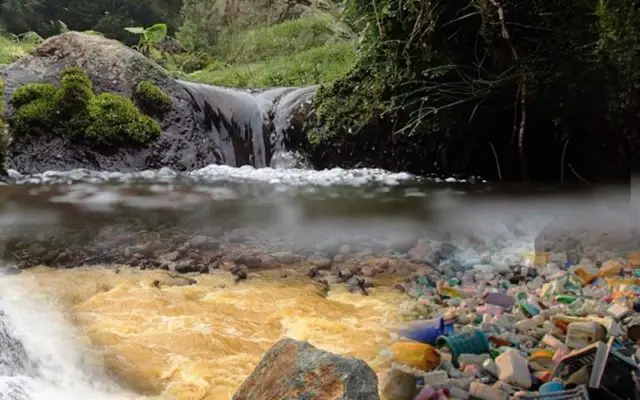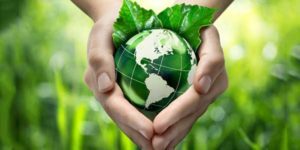During the last decades, we forgot to live in harmony with nature. We need to move towards a life that allows sustainable and sustainable development without damaging our waters.
Dr. Guillermo Calvo Brenes has been both a scholar and researcher on the subject for decades. From his recent doctoral work, there were 2 aspects that were evaluated: a predictive model for water quality in relation to environmental variables, and another related to quality itself.
In the country, the current quality indexes that are used are not the best. That is why we had to develop indexes and measure quality at the time. The predictive model has the advantage that it can determine that water quality just by looking at the environmental environment surrounding the rivers because there is a very close relationship between that environment and the quality of the water. For this reason, it is feasible to make that kind of relationship, and it is very important because it can be used in territorial planning.
During this project, 30 sampling points were evaluated in a year in the Greater Metropolitan Area (GAM) and the Osa Peninsula. An analysis of quality was made using these indexes and it was found that in that one-year process, in which sampling was done per month, only 22% of the sampled points had a class 1 quality, which is uncontaminated water and that can be used with some treatment for human consumption. That means that the rest, 78%, shows contamination levels from medium to highly contaminated.
On the other hand, it was also found that not necessarily the water that shows quality class 1 is maintained all year round. When there is heavy rain its quality deteriorates; because the rain drags pollutants that are on the surface, and takes them to the rivers.
It is important to mention that when this evaluation was made, it was about physical-chemical and microbiological indicators. At that time, heavy metals, which are dangerous to health, had not been included, nor were pesticides and herbicides included, which leaves a mystery in the air about the impact of these contaminants, used in agriculture and, in this specific case, about the rivers.

Currently, the specialist is working on research aimed at evaluating the content of heavy metals in rivers, in order to relate it to land use, and in this way generate a vulnerability map too heavy metals throughout the country, in accordance with the use of the ground. In this way, environmental management projects could be generated where one already knows that in “x” zone, for what is being done there. It can have a very strong impact.
The idea is to generate a model and a vulnerability map. In this case, the sampling points have been expanded and we are including places such as Guanacaste, San Carlos, Pital, GAM, Sierpe, Osa Peninsula, and Limón.
So far, the presence of lead and copper has been found in rivers. In the Tempisque, arsenic was found, which is not surprising, as it is a recognized point of contamination with this element. At some points, nickel and also mercury, which is a highly toxic pollutant, have been found practically in all the rivers sampled.
There are, in that sense, 2 types of source of contamination; one direct and one indirect. The direct one is the discharge of water from the houses directly to the rivers, and that is very related to the population density. In this project, this relationship between population density and pollution has been found, so that if there is a river that passes through a town where there is a certain population density, it can be foreseen that there is a strong contamination.
In places like Hatillo, which is highly populated and that is crossed by the María Aguilar River, there is extremely strong pollution. The same goes for the Torres River, in the Pavas area, where there is also a high population density. Indirect contamination is usually related to land use. Where there is agriculture and where there is urbanism, there is also surface contamination. In the case of agriculture, due to the use of fertilizers and pesticides, when the rain comes the pollution is dragged towards the rivers.
When we talk about urbanism, there is also superficial contamination. But the most serious problem with urbanism is that it occurs on impermeable surfaces, on which rain falls and carries pollution to rivers.
Can we reverse that? “With the projections we made with the predictive model, we realized that there is land uses that benefit water quality, that prevents water runoff, which serves as barriers, and also encourage infiltration, so we can favor the recharge of the aquifers. On the other hand, there are activities that work in reverse, which favor runoff, the transport of pollutants, which prevent the filtration of aquifers, etc. Then, when we talk about that predictive model and we see that there is a relationship between the environment and the land uses, we can think of a use for territorial ordering, in a technical way”, explains the specialist.
Urgent solutions to save water!
It is important that there is adequate management in the treatment of wastewater. In addition, there should be a policy with the local governments, which should take advantage of the territorial order to avoid water pollution and favor the recharge of aquifers.
In summary, there must be a responsible coexistence of the population with nature and also the commitment to work on a system of urbanism, avoiding the waterproofing of the soil, to the detriment of the quality of the water and because it favors flooding. Then, the solution goes through an action, both of the national government and the local government.
“The treatment plant that the government made is very recent if it would not be worse, and it was a donation from Japan, most of its budget. At the level of local governments, I know of no initiatives in this regard. Yes, I perceive ignorance about the situation of what happens in the country, on behalf of the government”, says Calvo.
Another of the necessary measures is to raise awareness among the population about the use of this precious liquid. By growing in harmony with our natural environment, it means being able to preserve resources in order to generate opportunities. A higher level of human and social development in the present as well as towards the future is necessary. That means not only saving the water we have today but also giving it an efficient use every time we open the tap, from the most daily activities to the most complex ones.
But also, change behaviors that have been devastating for decades such as pollution, inadequate management of waste and the alteration of forests with massive construction and infrastructure without much control, for what is sought is to achieve sustainable development.

